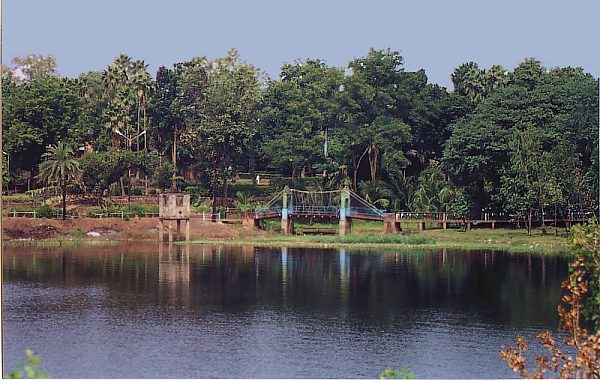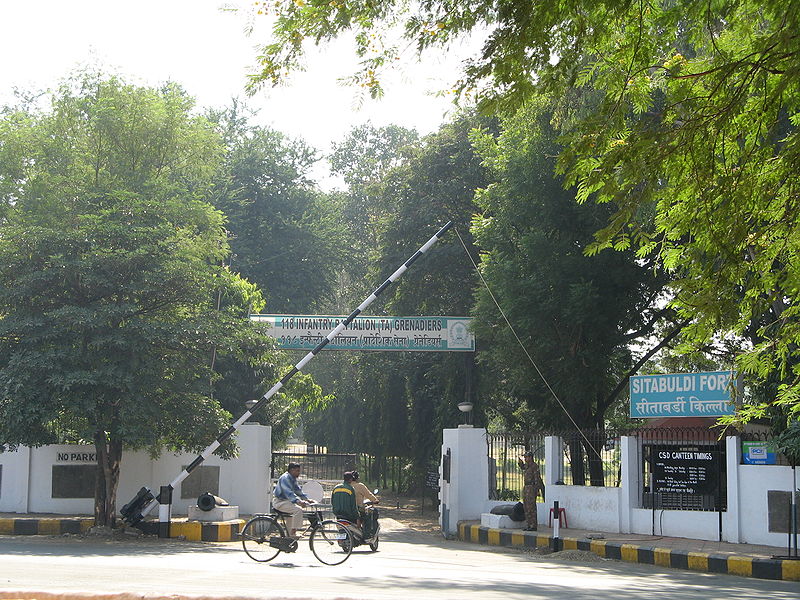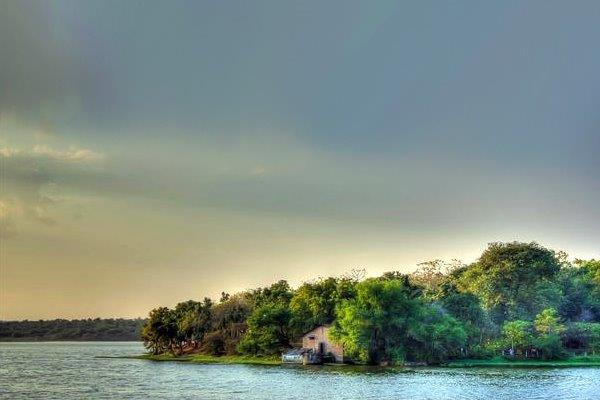Nagpur, The Orange City
General Information
District:NagpurState:MaharashtraCountry:IndiaArea:217.56 Sq. Km.Language Spoken:Marathi, Hindi, EnglishLong Distance Code:+91-712Importance:Winter Capital of the stateBest Time To Visit:October to FebruaryDescription:
Long ago it was a centre for the aboriginal Gond tribes. The present city was founded in the early 18th century by Bhakt Buland, a Gond prince of the kingdom of Deogad. 1743, and the control of Nagpur slowly passed on from the Gonds to the Marathas, the Bhonsales. In the mid-18th century Nagpur became the capital of the Maratha Kingdom. The city was made the capital of the Central Provinces in 1861 and of newly formed Madhya Pradesh State till it was merged in Maharashtra in 1960 and still remained the Capital of the Vidarbha region of Maharashtra.
Nestling in the midst of the Satpura hill ranges, Nagpur has a number of dense forests and national parks around it. Though there are hardly any site of tourist interest in the city, Nagpur can become a good boarding point to travel around.Location:
Situated on the River Nag, Nagpur is the second capital city of Maharashtra and derives its name from the River. This Orange-growing capital of India is around 837 km from Mumbai . It was once the capital of the central province, but was later incorporated into Maharashtra. Nagpur is almost at the geographical centre of India (approx. 79 E, 21 N). In fact the zero milestone of India is in this city. The adjoining districts are Bhandara on the east, Chandrapur on the south, Amaravati and Wardha on the west and in the north shares the boundary with Madhya Pradesh. It is an important railroad junction and a leading industrial center, with factories manufacturing cotton textiles and textile machinery, dyes, and wood paper products. Nagpur is also noted for hand woven silk and cotton textiles.
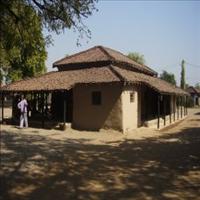 Pavanar is situated 3-km away from Sewagram, where there is an ashram of Acharya Vinoba Bhave. He was the disciple of Mahatma Gandhi and initiated the Bhudaan, i.e. donation of land movement. He walked the length and breadth of India persuading the rich landlords to donate their land to the poor land-less laborers. He stayed most of his time in this Ashram, which has many things he used.
Pavanar is situated 3-km away from Sewagram, where there is an ashram of Acharya Vinoba Bhave. He was the disciple of Mahatma Gandhi and initiated the Bhudaan, i.e. donation of land movement. He walked the length and breadth of India persuading the rich landlords to donate their land to the poor land-less laborers. He stayed most of his time in this Ashram, which has many things he used. This Hindu Pilgrimage centre is around 57 km from Nagpur. It is believed that Lord ram with his wife and brother stayed here on this mountain and hence the name Ramtek. The great poet Kalidas mentions this place as Ramgiri in his poetic verse, Meghadoot. There are many temples dedicated to Ram, Sita and Lakshman. There is a temple dedicated to Kalidas as well.
This Hindu Pilgrimage centre is around 57 km from Nagpur. It is believed that Lord ram with his wife and brother stayed here on this mountain and hence the name Ramtek. The great poet Kalidas mentions this place as Ramgiri in his poetic verse, Meghadoot. There are many temples dedicated to Ram, Sita and Lakshman. There is a temple dedicated to Kalidas as well.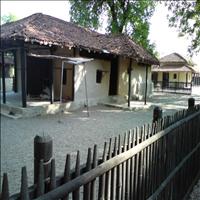 It is an important village in Wardha district, 88-km from Nagpur. Its original name was Shegaon but when Gandhi made it headquarter for his social service work its name was changed to Sewagram. There is also Gandhi Ashram and Gyan Mandir located over here.
It is an important village in Wardha district, 88-km from Nagpur. Its original name was Shegaon but when Gandhi made it headquarter for his social service work its name was changed to Sewagram. There is also Gandhi Ashram and Gyan Mandir located over here. The most important landmark of Nagpur is the historic Sitaburdi Fort, located atop a hill right in the centre of the city. Built in 1857 by a British officer, this is one of the oldest attractions of the city. The fort now houses the office of the Territorial Army, and is open to the public on National holidays.
The most important landmark of Nagpur is the historic Sitaburdi Fort, located atop a hill right in the centre of the city. Built in 1857 by a British officer, this is one of the oldest attractions of the city. The fort now houses the office of the Territorial Army, and is open to the public on National holidays. This Ganesh idol is nearly 250 years old and is situated on a small hillock near the railway station. Though the temple is a recent construction, the image of the God is beautiful and ancient.
This Ganesh idol is nearly 250 years old and is situated on a small hillock near the railway station. Though the temple is a recent construction, the image of the God is beautiful and ancient. In the heart of the city lies a huge ground with structure of stupa built on it. This Diksha Bhoomi is the religious place for the Buddhists and neo- Buddhists, as this was the place where Dr. Babasaheb Ambedkar, architect of the Indian Constitution, accepted Buddhism with lakhs of his followers, to get away from the Hindu caste barrier.
In the heart of the city lies a huge ground with structure of stupa built on it. This Diksha Bhoomi is the religious place for the Buddhists and neo- Buddhists, as this was the place where Dr. Babasaheb Ambedkar, architect of the Indian Constitution, accepted Buddhism with lakhs of his followers, to get away from the Hindu caste barrier. This is a project Tiger reserve park, the oldest National Parks of Maharashtra. It is a 120-sq-km park, perched at an altitude of 200m which is placed 100-km south of Nagpur and 45-km north of the district headquarter and industrial town of Chandrapur. Tadoba is also referred to as The Jewel of Vidarbha. Tadoba is the deity worshipped by the Gond tribe who used to stay here and hence the park is addressed with the same name. There are arrangements made to see the vast wildlife in the park. Normally in the nights, when the animals come to the lake, is a great sight to watch.
This is a project Tiger reserve park, the oldest National Parks of Maharashtra. It is a 120-sq-km park, perched at an altitude of 200m which is placed 100-km south of Nagpur and 45-km north of the district headquarter and industrial town of Chandrapur. Tadoba is also referred to as The Jewel of Vidarbha. Tadoba is the deity worshipped by the Gond tribe who used to stay here and hence the park is addressed with the same name. There are arrangements made to see the vast wildlife in the park. Normally in the nights, when the animals come to the lake, is a great sight to watch.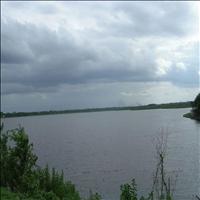 The most beautiful and well maintained getaway of the Nagpur city, is the Ambazari Lake. It is the largest in Nagpur. The garden besides the lake is a hit as a picnic spot. The main attraction of the garden are the dancing fountains and the aero-modeling show in the evening in which the remote controlled seaplanes are seen landing on the water every Saturday ad Sunday evenings.
The most beautiful and well maintained getaway of the Nagpur city, is the Ambazari Lake. It is the largest in Nagpur. The garden besides the lake is a hit as a picnic spot. The main attraction of the garden are the dancing fountains and the aero-modeling show in the evening in which the remote controlled seaplanes are seen landing on the water every Saturday ad Sunday evenings.